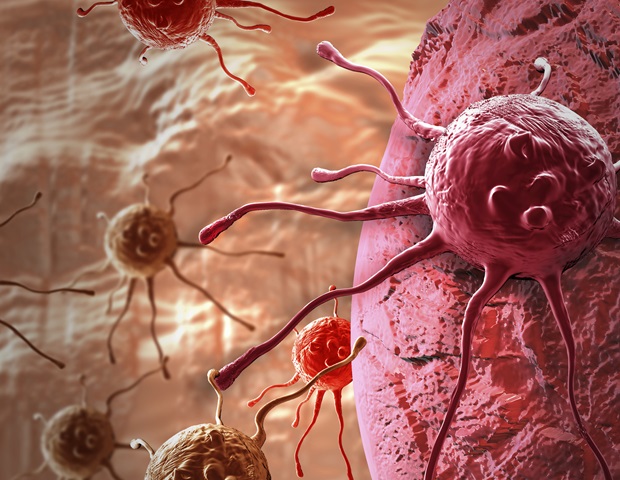
– Phase 2 trial of EDG-7500 demonstrated rapid and clinically meaningful reductions in LVOT gradients in participants with obstructive HCM – – Four-week treatment with EDG-7500 demonstrated substantial improvements in measures of feel and function, reductions in key cardiac biomarkers and positive trends in measures of diastolic function – – EDG-7500 was generally well-tolerated; clinical activity was observed without meaningful changes in LVEF, including no participant with a value below 50% – BOULDER, Colo. , April 2, 2025 /PRNewswire/ -- Edgewise Therapeutics, Inc., (Nasdaq: EWTX ), a leading muscle disease biopharmaceutical company, today announced positive top-line data of EDG-7500 from the Phase 2 CIRRUS-HCM four-week trial in participants with obstructive or nonobstructive HCM.
EDG-7500 is a novel oral, selective, cardiac sarcomere modulator, specifically designed to slow early contraction velocity and address impaired cardiac relaxation associated with HCM without impacting systolic function. CIRRUS-HCM is a multi-part, open-label trial of EDG-7500 in individuals with HCM. In September 2024 , the Company announced positive top-line data from Part A of the trial showing that a single oral dose of EDG-7500 in participants with obstructive HCM demonstrated robust reductions in left ventricular outflow tract gradient (LVOT-G) without meaningful changes in left ventricular ejection fraction (LVEF).

Part B of CIRRUS-HCM included 17 participants with obstructive HCM and Part C included 12 participants with nonobstructive HCM. Both parts of the trial evaluated the safety and efficacy of once-daily doses of 50 or 100 mg of EDG-7500 for four weeks. In participants with obstructive HCM, EDG-7500 demonstrated meaningful dose-dependent reductions in LVOT-G at rest and post Valsalva.
Participants receiving 100 mg experienced mean reductions from baseline of 71% and 58% in resting and provokable (Valsalva) gradients, respectively. Importantly, gradient reductions were achieved without meaningful changes in LVEF. Treatment with 100 mg of EDG-7500 also demonstrated a 62% mean reduction from baseline in NT-proBNP, a key biomarker of heart failure.
In addition, positive trends in echocardiographic parameters of diastolic function were observed following treatment with EDG-7500. Clinically meaningful improvements were also observed on the Kansas City Cardiomyopathy Questionnaire Overall Summary Score (KCCQ-OSS), with a substantial mean increase of 23 points observed at the 100 mg dose. In addition, treatment with 100 mg of EDG-7500 over four weeks demonstrated improvements on the NYHA functional class score.
Seventy-eight percent of participants improved by ≥ 1 NYHA Class, and 67% improved to NYHA Class I (i.e. asymptomatic).
In participants with nonobstructive HCM, EDG-7500 administration resulted in a dose-dependent reduction in NT-proBNP, with a 42% mean decrease from baseline at 100 mg. A positive trend in an echocardiographic parameter of diastolic function (mean e') was observed in as early as one week. Substantial improvements in KCCQ-OSS and KCCQ-Clinical Summary Scores, with substantial mean increases of 17 points and 22 points, respectively, were observed at the 100 mg dose after only four weeks.
The positive results observed in participants with obstructive HCM and nonobstructive HCM were achieved without meaningful reductions in LVEF. Importantly, there were no LVEF values <50% at any measurement. The most frequently reported adverse events were dizziness, upper respiratory tract infection and atrial fibrillation (AF); nearly all were considered mild to moderate in severity.
Two participants experienced serious adverse events of AF requiring cardioversion. In Parts B and C, the rates of AF were in the range of those reported in other HCM Phase 2 clinical trials of cardiac myosin inhibitors. One participant discontinued treatment due to moderate dizziness.
Ahmad Masri , M.D., M.
S., Director of the Hypertrophic Cardiomyopathy Center at Oregon Health and Science University and CIRRUS-HCM Investigator highlighted, "These early data with EDG-7500 are encouraging, with favorable changes across multiple domains, including robust improvements in KCCQ, which suggests a potential effect of EDG-7500 on LVOT obstruction, wall stress, and diastolic dysfunction." "After the initial single dose results and now with these data generated over four weeks of treatment, we are starting to see the profile of EDG-7500 emerge," said Anjali T.
Owens , M.D., Medical Director, Center for Inherited Cardiac Disease, Associate Professor of Medicine, in the Perelman School of Medicine at the University of Pennsylvania and CIRRUS-HCM Investigator.
"I am particularly encouraged by the strong improvements in diastolic function, as well as the overall symptom relief with little to no effect on systolic function. The findings reinforce my enthusiasm for continuing to study this important investigational therapy." "Building on the strength of clinical data to date, we are optimizing our dosing strategy in Part D of CIRRUS-HCM in participants with obstructive and nonobstructive HCM, which will inform our plans for Phase 3," said Kevin Koch , Ph.
D., President and Chief Executive Officer, Edgewise Therapeutics. "We believe EDG-7500, which delivered clinically meaningful results without causing systolic dysfunction, has the potential to be a significant advancement for patients with HCM and the clinicians who care for them.
" The initial data read-out from Part D is expected in the second half of 2025, with Phase 3 initiation planned for the first half of 2026. EDG-7500 Top-line Data Webcast Event Members of the Edgewise management team will hold a live webcast on Wednesday, April 2, 2025 , at 8:30 a.m.
ET to discuss the top-line data, and will be joined by leading cardiology experts, Anjali T. Owens , M.D.
, Medical Director, Center for Inherited Cardiac Disease, Associate Professor of Medicine, in the Perelman School of Medicine at the University of Pennsylvania , and Ahmad Masri , M.D., M.
S., Director of the Hypertrophic Cardiomyopathy Center at Oregon Health and Science University. An accompanying slide presentation will also be available.
To register for the live webcast and replay, please visit the Edgewise events page . About CIRRUS-HCM CIRRUS-HCM, multi-center, open-label trial, in approximately 70 participants with HCM at up to 20 clinical sites in the U.S.
In Part A (obstructive HCM), participants received a single dose of 50, 100 or 200 mg of EDG-7500. The primary objective of Part A was to evaluate the safety and tolerability of a single oral dose of EDG-7500 in obstructive HCM. In Part B (obstructive HCM), participants were diagnosed with obstructive HCM, LVOT peak gradient ≥30 mmHg measured at rest and ≥50 mmHg post-Valsalva as determined by echocardiography at screening, documented LVEF of ≥0.
60 at screening and New York Heart Association (NYHA) classifications of Class I-III. The primary objective of Part B was to evaluate the safety and tolerability of multiple doses of EDG-7500 over four weeks in participants with obstructive HCM. In Part C (nonobstructive HCM) , participants were diagnosed with nonobstructive HCM, LVOT peak gradient of < 30 mmHg measured at rest and < 50 mmHg measured during the Valsalva maneuver as determined by echocardiography as assessed at screening, maximal exercise peak LVOT gradient of < 50 mmHg as determined by echocardiography as assessed by the investigator, documented LVEF of ≥0.
60 at screening and NYHA classifications of Class I-III. The primary objective of Part C was to evaluate the safety and tolerability of multiple doses of EDG-7500 over four weeks in participants with nonobstructive HCM. In Part D (obstructive and nonobstructive HCM) , participants will be studied across 12 weeks of treatment, followed by a longer-term extension.
The EDG-7500 dose will be optimized based on measures of NT-proBNP, KCCQ, and LVOT-G (obstructive HCM only). To learn more about CIRRUS-HCM, visit clinicaltrials.gov, NCT06347159 (Phase 2) .
About EDG-7500 EDG-7500 is a novel oral, selective, cardiac sarcomere modulator, specifically designed to slow early contraction velocity and address impaired cardiac relaxation associated with HCM and other diseases of diastolic dysfunction. The Company is enrolling the Phase 2 CIRRUS-HCM, multi-center, open-label trial, in obstructive and nonobstructive HCM in the U.S.
About Hypertrophic Cardiomyopathy HCM is the most common form of genetic heart disease, affecting approximately one in 500 people, and is associated with reduced quality of life and an elevated risk of heart failure, abnormal heart rhythms, and sudden cardiac death. Individuals with HCM can become extremely limited in their functional capacity and ability to perform the activities of daily living. Commonly experienced symptoms include breathlessness, irregular heartbeats, chest pain, tiredness, dizziness, or even fainting.
These symptoms are caused by excessive contraction and thickening (hypertrophy) of the left ventricular wall of the heart. Over time, the thickened muscle becomes stiff, making it difficult for the heart to relax and fill with blood (diastolic dysfunction). There are two major forms of HCM obstructive and nonobstructive.
The obstructive HCM pathology is observed in two thirds, while nonobstructive HCM is present in one third of all individuals with HCM. Despite advancements in treatment options for some patients with HCM, there remains a significant unmet need for additional therapeutic approaches for patients. About Edgewise Therapeutics Edgewise Therapeutics is a leading muscle disease biopharmaceutical company developing novel therapeutics for muscular dystrophies and serious cardiac conditions.
The Company's deep expertise in muscle physiology is driving a new generation of novel therapeutics. Sevasemten is an orally administered skeletal myosin inhibitor in late-stage clinical trials in Becker and Duchenne muscular dystrophies. EDG-7500 is a novel cardiac sarcomere modulator for the treatment of hypertrophic cardiomyopathy and other diseases of diastolic dysfunction, currently in Phase 2 clinical development.
The entire team at Edgewise is dedicated to our mission: changing the lives of patients and families affected by serious muscle diseases. To learn more, go to: www.edgewisetx.
com or follow us on LinkedIn , X , Facebook and Instagram . Cautionary Note Regarding Forward-Looking Statements This press release contains forward-looking statements as that term is defined in Section 27A of the Securities Act of 1933 and Section 21E of the Securities Exchange Act of 1934. Statements in this press release that are not purely historical are forward-looking statements.
Such forward-looking statements include, among other things, statements regarding the potential of, and expectations regarding, EDG-7500, statements regarding the potential market opportunity for EDG-7500, statements regarding Edgewise's expectations and milestones relating to its clinical trials and clinical development of EDG-7500, including the timing of the initial data read-out from the Part D Phase 2 CIRRUS-HCM trial and the timing of the Phase 3 initiation of the CIRRUS-HCM trial, statements by Edgewise's President and Chief Executive Officer, and statements by Dr. Masri and Dr. Owens.
Words such as "believes," "anticipates," "plans," "expects," "intends," "will," "goal," "potential" and similar expressions are intended to identify forward-looking statements. The forward-looking statements contained herein are based upon Edgewise's current expectations and involve assumptions that may never materialize or may prove to be incorrect. Actual results could differ materially from those projected in any forward-looking statements due to numerous risks and uncertainties, including but not limited to: risks associated with Edgewise's limited operating history, its products being early in development and not having products approved for commercial sale; risks associated with Edgewise not having generated any revenue to date; Edgewise's ability to achieve objectives relating to the discovery, development and commercialization of its product candidates, if approved; Edgewise's need for substantial additional capital to finance its operations; Edgewise's substantial dependence on the success of EDG-7500; Edgewise's ability to develop and commercialize EDG-7500 and discover, develop and commercialize product candidates in future programs; risks related to Edgewise's clinical trials of its product candidates, including EDG-7500, not demonstrating safety and efficacy; risks related to Edgewise's product candidates, including EDG-7500, causing serious adverse events, toxicities or other undesirable side effects; the outcome of preclinical testing and early clinical trials of Edgewise's product candidates, including EDG-7500, not being predictive of the success of later clinical trials and the risks related to the results of such clinical trials not satisfying the requirements of regulatory authorities; delays or difficulties in the enrollment and/or maintenance of patients in clinical trials, including the CIRRUS-HCM trial; risks related to competition; risks relating to interim, topline and preliminary data from Edgewise's clinical trials, including the CIRRUS-HCM trial, changing as more patient data becomes available; risks related to the regulatory approval processes of domestic and foreign authorities being lengthy, time consuming and inherently unpredictable; risks related to production of drugs by Edgewise's third-party manufacturers; risks related to changes in methods of product candidate manufacturing or formulation; risks related to not achieving adequate market acceptance; the size of the market opportunity for Edgewise's product candidates, including EDG-7500; risks related to regulatory authorities not accepting data from trials conducted in locations outside of their jurisdiction; risks relating to Edgewise's ability to attract and retain highly skilled executive officers and employees; Edgewise's ability to obtain and maintain intellectual property protection for its product candidates; Edgewise's reliance on third parties; general economic and market conditions; and other risks.
Information regarding the foregoing and additional risks may be found in the section entitled "Risk Factors" in documents that Edgewise files from time to time with the U.S. Securities and Exchange Commission.
These forward-looking statements are made as of the date of this press release, and Edgewise assumes no obligation to update the forward-looking statements, or to update the reasons why actual results could differ from those projected in the forward-looking statements, except as required by law. This press release contains hyperlinks to information that is not deemed to be incorporated by reference into this press release. SOURCE Edgewise Therapeutics.















